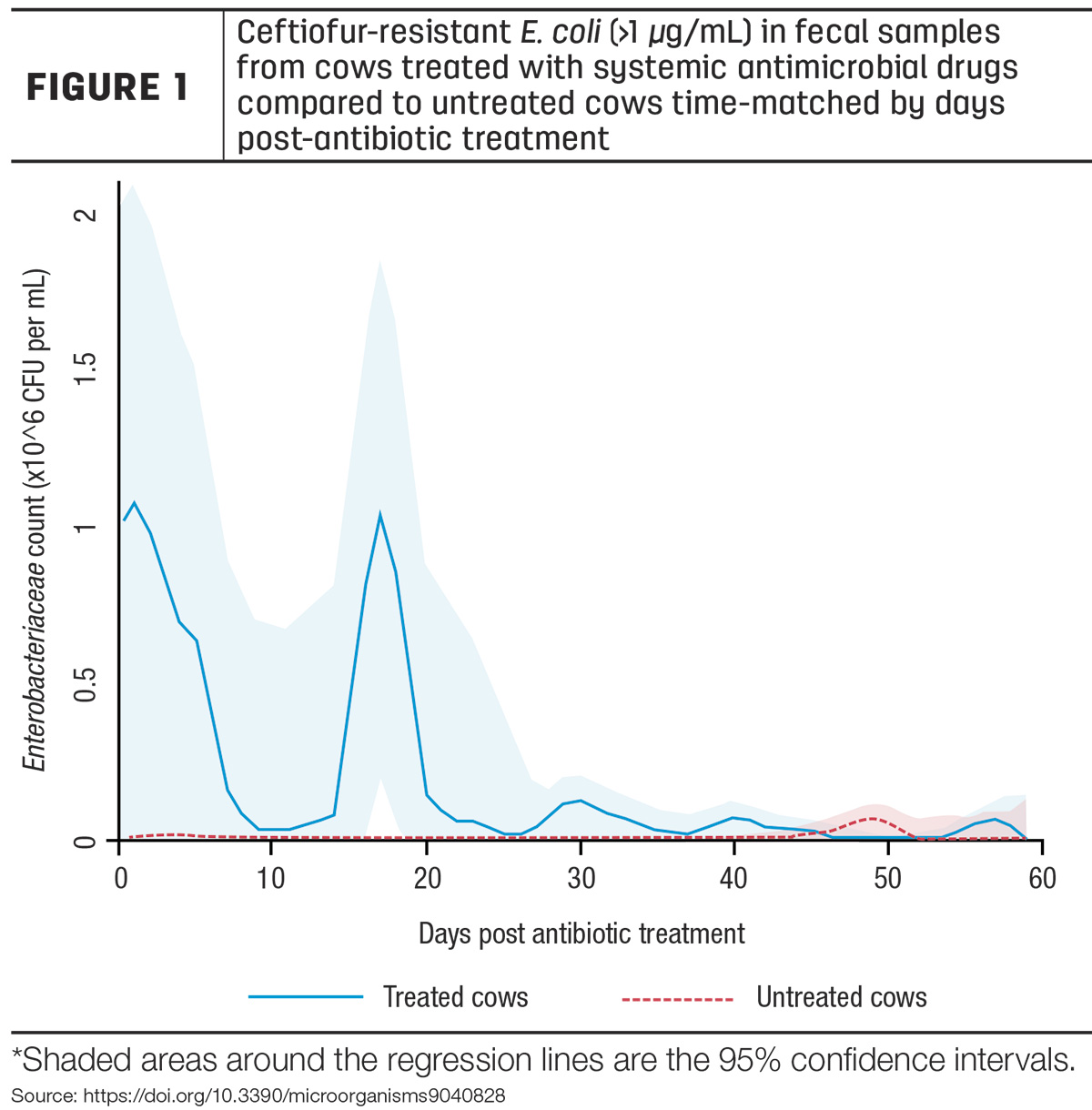“We have to communicate and demonstrate our shared values with consumers,” said Terry Lehenbauer, professor and researcher at the University of California – Davis, during a question-and-answer portion of a presentation on antimicrobial drug use and resistance in dairy cattle at World Ag Expo in Tulare, California, on Feb. 14. “We have to communicate that we are concerned from a public health standpoint, that we are being responsible, veterinarians are involved and we are taking good care of our animals.”
Lehenbauer presented the current regulations and concerns surrounding antimicrobial resistance (AMR) alongside Sharif Aly, epidemiology professor and researcher, and Essam Abdelfattah, assistant professional researcher, also at the University of California – Davis.
Identifying the problem that 2.8 million patients in the U.S. with bacterial infections are resistant to antimicrobials, Lehenbauer mentioned there are at least 35,000 deaths associated with that statistic, according to a 2019 report from the Centers for Disease Control and Prevention (CDC).
This, coupled with the growing consumer concern about antibiotic use in food-producing animals, is a driving factor fueling research and a push to better use and regulate antimicrobials in the dairy industry.
“It’s often stated that 80 percent of antibiotics are used in animals, and that’s often inferred as the cause of antibiotic resistance,” Lehenbauer said. “That’s not really a fair statement. In fact, the FDA explicitly warns against making those kinds of comparisons of use levels between livestock and people. Nonetheless, that is still driving the talk and concern about antibiotic resistance.”
The FDA has approved four uses of antibiotics in food-producing animals (Table 1).

Lehenbauer discussed the veterinary feed directive (VFD) change in January 2017 and its effects. The VFD change no longer permits the use of medically important antimicrobials administered in feed for growth promotion and feed efficiency. In January 2018, California implemented Senate Bill 27, which restricts over-the-counter (OTC) sales of medically important antibiotics and requires a veterinary prescription for all dosage forms of medically important antimicrobials, including those administered orally or by injection. Based on FDA reports, sales and distribution of medically important antimicrobial drugs used in food-producing animals declined 38% since 2015 (peak year of use) and 33% since 2012 (the first year of collected data.)
The rest of the U.S. will follow California’s suit to restrict OTC sales of antibiotics, which will become effective on June 11, 2023. The FDA is also currently accepting public comments on proposed revisions to guidance document GFI #152: Evaluating the Safety of Antimicrobial New Animal Drugs with Regard to Their Microbiological Effects on Bacteria of Human Health Concern, with updated ranking criteria for determining the degree of medical importance for human therapy, which could further restrict veterinary access and use of some antibiotics.
Lehenbauer noted Maryland’s restriction on blanket dry cow therapy, which went into effect in January 2021, and expressed concern that this could be something other states adopt going forward.
Aly, Lehenbauer and University of California – Davis Assistant Specialist in Cooperative Extension Emmanuel Okello led a team of graduate students and post-doctoral scholars, in a project funded by the California Department of Food and Agriculture, to research the epidemiology of AMR on California dairies. Abdelfattah presented his research, which involved a longitudinal study on antimicrobial treatments and resistance in adult cattle on California dairies, with the objectives to both describe the prevalence of AMR phenotype in dairy cows and collect information on antimicrobial drug usage. The team enrolled 10 dairies from three regions of California in this study and observed cattle and practices throughout the winter of 2018 and summer of 2019. Fecal samples were collected from 12 individual cows per dairy per seasonal cohort throughout the first 120 days in milk to determine AMR in commensal enteric bacteria via minimum inhibitory concentration of selected antibiotics used in dairies to treat infections.
Results showed low AMR for drugs commonly administered to dairy cows, such as cephalosporins and penicillin. Abdelfattah found higher rates of AMR to drugs not approved for use in lactating cattle, such as florfenicol and macrolides, which are typically administered in calves. Adult cow treatment records from the dairies in the study do not identify treatments using florfenicol and tilmicosin. Such drugs are excreted in feces and urine of the treated calves and can expose other cattle on the dairy through recycled flush water, which could explain the observed resistance in adult cows. The group’s current research has detected residues of these same drugs in recycled lagoon water. Adult cows can also be exposed directly to bacteria resistant to the same drugs excreted in recycled lagoon water. Further research is needed to confirm why there is AMR in adult cows for drugs that are not approved for use in adult dairy cattle.
Aly presented his work on rates of accrual and loss of AMR in dairy cattle, enrolling two dairies and a calf ranch in his study. Fecal samples were collected three times per week, cultured on agar plates and measured for E. coli commensals. Each plate was treated with a different concentration of antibiotic to determine at what dosage resistance occurs. Repeating this process with each sample, Aly was able to determine that the E. coli bacteria population responds in cyclical, dampened waves to antibiotics (Figure 1). These waves began following the end of a treatment regimen and decreased over time. Further research is needed to determine why these waves occur and what affects the expression of this phenomenon.

With continued rising concern surrounding food production, proactive research like this will aid in addressing consumer concerns before they are too large to handle.










